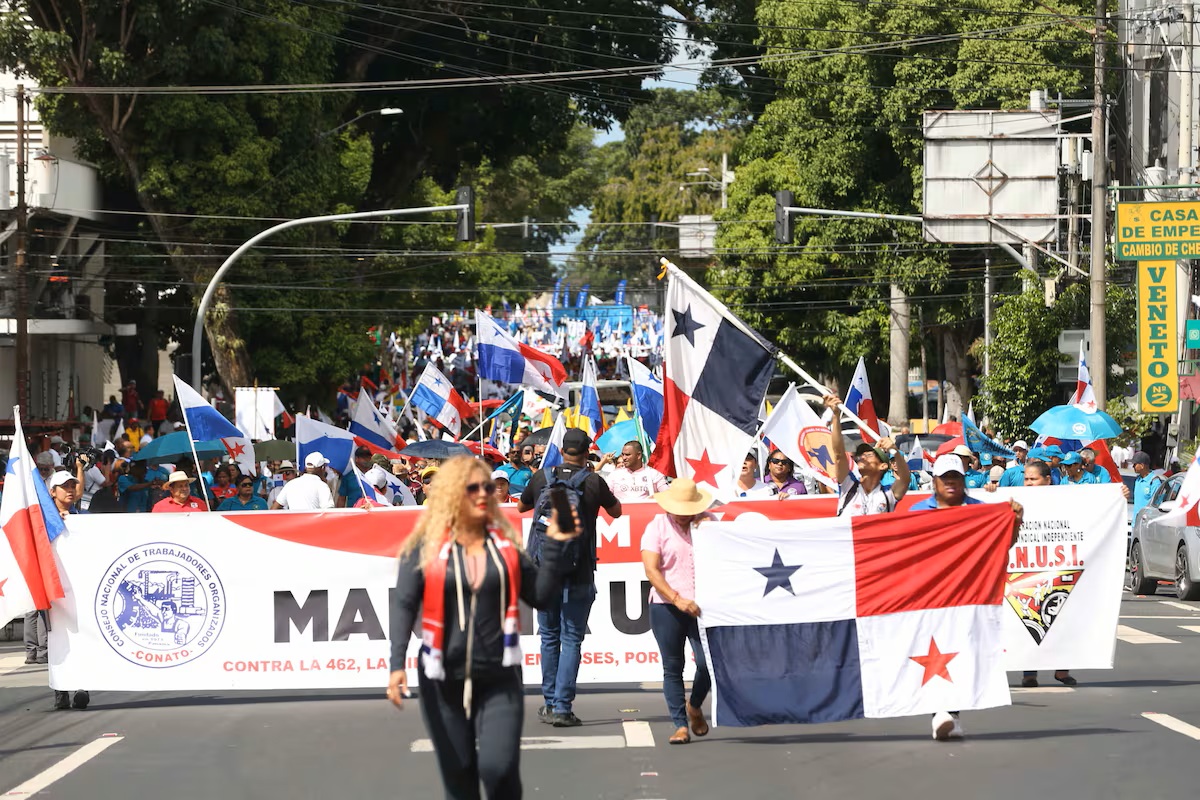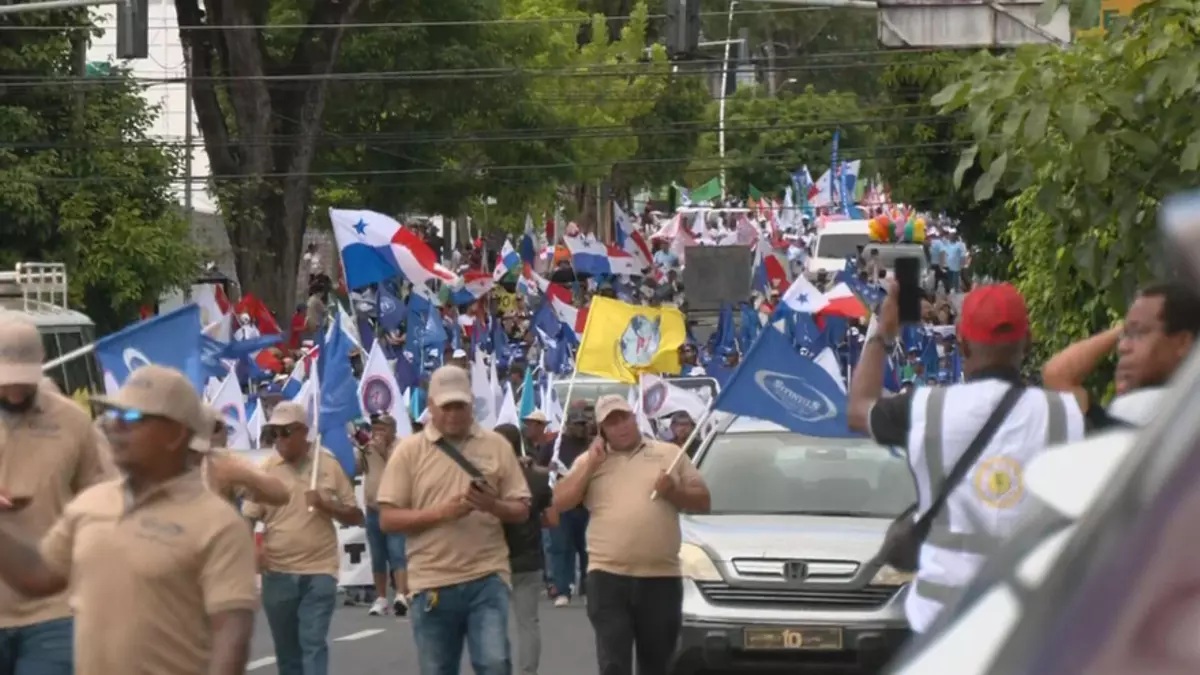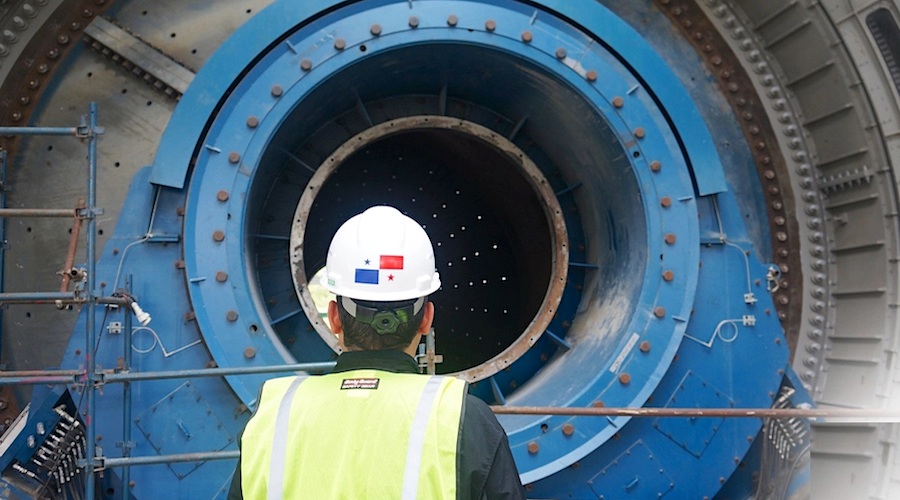Labor Day May 1st Marching with Workers, Teachers, and Union Groups Participating
Workers, laborers, educators, and civil society marched toward 5 de Mayo in commemoration of Labor Day.

Various groups of workers, educators, laborers, and civil society representatives are marching Thursday May 1st from Belisario Porras Plaza on Peru Avenue in Panama City to 5 de Mayo Street in commemoration of Labor Day. They are also marching along the main avenues of the Panamanian capital in commemoration of International Workers’ Day. The march was organized by the National Workers’ Confederation of Panama (CNTP).
Labor Day: A day of Mass, Marches, and Rallies in Panama
Panama City, Panama: With a mass at 8:00 a.m. at the Don Bosco Basilica in Panama City, the activities planned to commemorate Labor Day on the first of May began. Subsequently, various union and civil society groups held a march starting from Plaza Porras, in which organized workers and union groups participated. On the street, some people go about their normal day, working, like the Sanitation Authority staff. Some “antlets,” as they are known, were cleaning Porras Square this Thursday.

Some of those sitting in the square were grateful for having a job and took the opportunity to remind young people to fight for better opportunities for all. Eduardo Gil, from Convergencia Sindical, spoke about the presence of two important leaders from the Americas, such as Rafael Freire, general secretary of the Confederation of Workers of the Americas, who will give a speech in Plaza 5 de Mayo, accompanied by Marcelo Di Stefano, leader of the Public Servants International (PSI), and who are in Panama because of their “concern” for “freedom of association” in the country.
Why is This Day Commemorated?
In May 1886, a group of American workers fought against labor exploitation and for better working conditions. This struggle turned them into martyrs; many of them were fired, imprisoned, and even murdered for protesting against their employers’ exploitation and forced work long hours of up to 14 hours or more. Back then, the workforce had no rights, no security, and even less labor laws. Exhausted by this situation, some workers began to demand an eight-hour workday and better working conditions. Years earlier, in November 1884, several American workers held a congress in Chicago in which they agreed that, starting May 1, 1886, employers would respect the 8-hour workday and, if they did not comply, the workers would go on strike.





